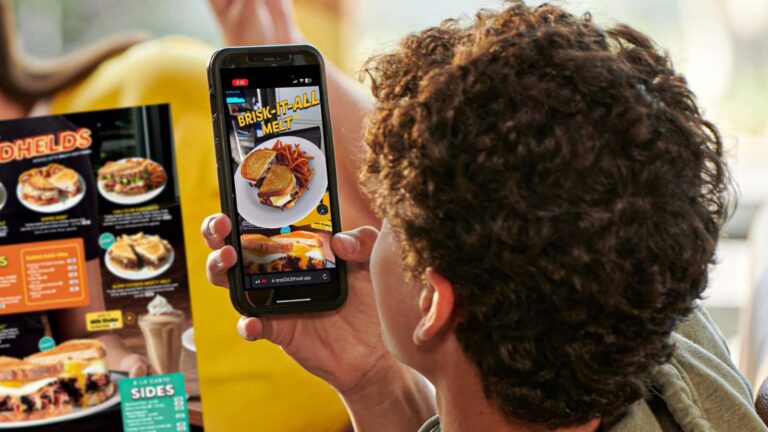
XR continues to evolve and take shape. Like other tech sectors, it has spawned several sub-sectors that comprise an ecosystem. These include industrial AR, consumer VR, and AI wearables. Existing alongside all of them – and overlapping to some degree – is AR marketing.
Among other things, AR marketing includes sponsored AR lenses that let consumers visualize products in their space. This field – including AR creation tools and ad placement – could grow to $11.2 billion in 2029 according to our research arm, ARtillery Intelligence.
Factors propelling this growth include brand advertisers’ escalating affinity for, and recognition of, AR’s potential. More practically speaking, there’s a real business case. AR marketing campaigns continue to show strong performance metrics when compared with 2D benchmarks.
How is this coming together? And what are best practices? These questions were tackled in a recent report from ARtillery Intelligence, including narrative analysis, revenue projections, and campaign case studies. It joins our report excerpt series, with the latest below.
The Bad News
After the last installment of this series examined AR marketing’s advantages and driving factors, we now play devil’s advocate to look at its shortcomings. What’s holding it back, and where can it improve? A positive way to spin that quesiton is where are the opportunity gaps?
One area that continues to represent an opportunity is AR marketing asset creation. This requires graphical elements and a certain degree of production and distribution rigor. Among other things, it involves large-file 3D models and interaction design for virtual product try-ons.
This opportunity includes platforms that can streamline the creation of AR interactions and end-user experiences. This gap is being filled by tools that address different types of 3D graphics and skill sets – everything from Unity to JigSpace. We’ll continue to see these tools develop.
Closely related is the need for infrastructure, optimization, and distribution of 3D product models. That includes things like compression technologies and tools to manage 3D assets. For example, VNTANA is a 3D content management system that’s useful for brand marketers.
Key Ingredient
There are also creation tools baked into social AR platforms such as Lens Studio. And Adobe Aero offers a drag & drop creation environment for AR interactions. One of its advantages is that it plugs into and inherits a familiar design language of Adobe’s ubiquitous Creative Cloud.
Another gap is 3D model creation and high-fidelity scans of physical products such as furniture. These 3D assets are a key ingredient for AR product visualization and interactivity. And there are companies that specialize in building them, such as CG Trader in hard goods, and QReal in food.
Meanwhile, IKEA, Wayfair, and others have developed in-house systems to 3D-scan their product libraries. But the real opportunity is for players like SuperDNA 3D Lab, which help large and small retailers reduce friction in the process of building 3D models for their products.
Apple’s Object Capture has also begun to address this need, letting iPhone users create 3D models from photos that are stitched together. Snap and Amazon have partnered to do something similar, and we’ll continue to see such features lower barriers for 3D model creation.
Case Study: SuperDNA 3D Lab & Tubular Network Redefine Air Travel
The CTR of AR
Another missing piece of the AR marketing puzzle is metrics. The advertising world tends to stick to what it knows, such as impressions and click-through rates (CTRs). But AR engagement may not be adequately measured in these ways, as they don’t capture its depth of experience.
Given this dilemma, AR’s challenge is to develop native metrics that capture its unique value. In other words, what’s the CTR of AR? We’re starting to see some early indicators emerge, many of which are still developing and are demonstrated in the case studies we often publish.
For example, one metric seen in several AR marketing case studies is dwell time. This measures session lengths for a given campaign. AR’s ability to captivate consumers with immersive content has proved to boost this metric, which can in turn boost brand affinity, ad recall, and sales.
In all cases, it will be important to establish benchmarks for AR marketing. Standard units like session lengths can assign value to engagement levels that brand marketers can expect. This will be an important evolutionary step and a moving target as AR marketing grows into its own skin.
We’ll pause there and circle back in the next installment with more AR marketing analysis and campaign case studies. Meanwhile, see the full report here.
